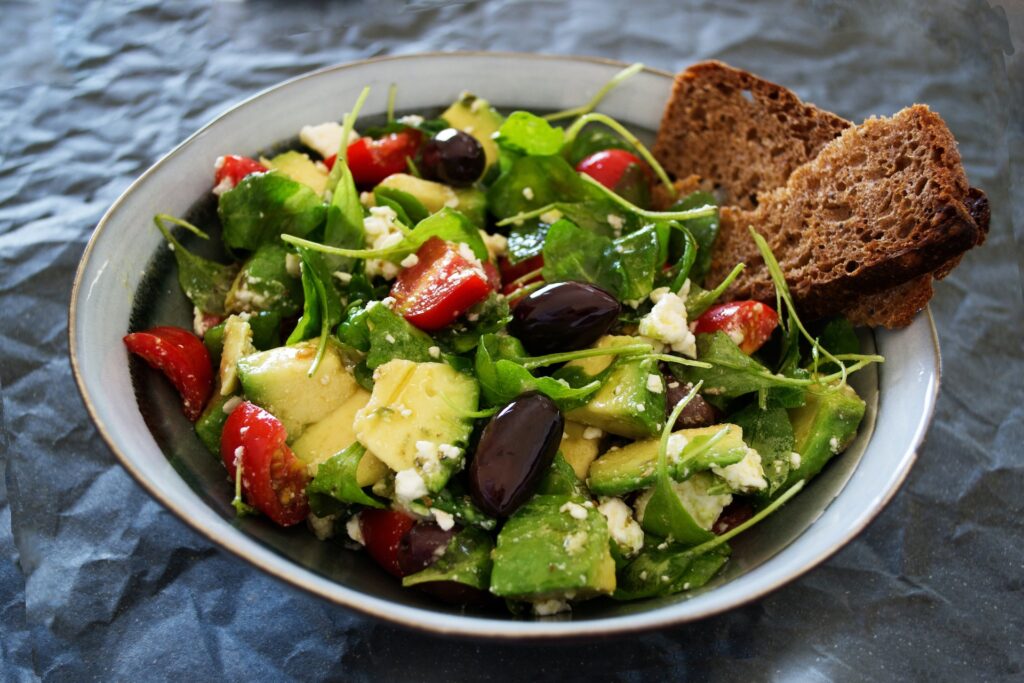What’s the Balanced Diet
Maintaining good health and well-being is a goal that resonates with individuals from all walks of life. While there are many factors that contribute to overall wellness, one aspect that plays a fundamental role is a balanced diet. The concept of a balanced diet revolves around the idea of consuming a variety of foods that provide essential nutrients in appropriate proportions. It is a dietary approach that not only fuels our bodies but also supports optimal functioning, growth, and disease prevention.
Key Components of a Balanced Diet
A balanced diet consists of a variety of foods that provide essential nutrients in appropriate proportions. The following are the five key components of a balanced diet:
A. Fruits and Vegetables
Fruits and vegetables are essential sources of vitamins, minerals, and dietary fiber. Eating a variety of colorful fruits and vegetables can help reduce the risk of chronic diseases such as cancer, heart disease, and stroke. According to the World Health Organization (WHO), adults should consume at least five servings of fruits and vegetables per day.
Some examples of nutrient-rich fruits and vegetables include:

- Berries, such as strawberries, blueberries, and raspberries, which are rich in antioxidants and vitamin C.
- Leafy greens, such as spinach, kale, and broccoli, which are excellent sources of vitamin K, folate, and other micronutrients.
- Citrus fruits, such as oranges, lemons, and grapefruits, which are high in vitamin C and fiber.
- Carrots, sweet potatoes, and other orange and yellow vegetables are rich in beta-carotene, a precursor to vitamin A.
To incorporate more fruits and vegetables into your diet, you can try:
- Adding sliced fruits to your morning oatmeal or yogurt
- Snacking on raw vegetables with hummus or other dips
- Incorporating more salads and vegetable-based soups into your meals
- Experiment with different cooking methods, such as roasting or grilling, to enhance the flavors of your vegetables.
B. Grains
Grains are an excellent source of complex carbohydrates, fiber, and some essential vitamins and minerals. Whole grains are preferred over refined grains, as they contain more fiber and other beneficial nutrients. The USDA recommends that at least half of the grains you consume should be whole grains.
Examples of whole-grain foods include:
- Whole wheat bread and pasta
- Brown rice
- Quinoa
- Oats
To incorporate more whole grains into your diet, you can try:
- Choosing whole grain bread instead of white bread
- Swapping regular pasta for whole wheat pasta
- Having oatmeal or other whole grain cereals for breakfast
- Adding brown rice to your stir-fries or salads.
C. Protein-Rich Foods
Protein is essential for building and repairing tissues and plays a role in many bodily functions, including immune system function and hormone production. Protein-rich foods include:
- Lean meats, such as chicken, turkey, and fish
- Legumes, such as lentils, chickpeas, and black beans
- Nuts and seeds, such as almonds, chia seeds, and hemp seeds
- Dairy products, such as milk, yogurt, and cheese.
The amount of protein you need depends on various factors, including your age, sex, weight, and physical activity level. However, most adults need around 0.8 grams of protein per kilogram of body weight per day.
To incorporate more protein-rich foods into your diet, you can try:
- Adding nuts and seeds to your oatmeal or yogurt
- Having a salad with legumes, such as chickpeas or black beans, for lunch
- Incorporating lean meats, such as grilled chicken or fish, into your meals
- Choosing dairy products that are low in fat and added sugars.
- D. Dairy Products
Dairy products are an excellent source of calcium, vitamin D, and other essential nutrients. However, some people may be lactose intolerant or follow a vegan lifestyle, which means they need to find alternative sources of these nutrients. Some examples of dairy alternatives include fortified plant-based milk, such as almond or soy milk, and soy-based yogurts.

D. Healthy Fats
Contrary to popular belief, not all fats are harmful to our health. In fact, certain fats are essential for our well-being and should be included in a balanced diet. Healthy fats provide energy, help absorb fat-soluble vitamins, support cell growth, and protect organs.
Here are some sources of healthy fats that you can incorporate into your diet:
- Avocados:
Rich in monounsaturated fats, avocados are not only creamy and delicious but also contribute to heart health and help reduce bad cholesterol levels. - Nuts and Seeds:
Almonds, walnuts, flaxseeds, chia seeds, and hemp seeds are packed with healthy fats, omega-3 fatty acids, and fiber. They make for a satisfying snack and can be sprinkled over salads or incorporated into smoothies. - Olive Oil:
A staple of the Mediterranean diet, extra virgin olive oil contains monounsaturated fats and antioxidants. It is a versatile oil for cooking, dressing salads, or drizzling over-cooked dishes for added flavor. - Fatty Fish:
Salmon, mackerel, trout, and sardines are excellent sources of omega-3 fatty acids, which are beneficial for brain health and reducing inflammation in the body. Aim to include fatty fish in your diet at least twice a week. - Coconut Oil:
While high in saturated fat, coconut oil contains medium-chain triglycerides (MCTs), which can be easily metabolized for energy. It is suitable for cooking at moderate temperatures and can add a unique flavor to dishes.
When incorporating healthy fats into your diet, it is important to remember that moderation is key. Fats are calorie-dense, so portion control is essential. Aim to replace unhealthy saturated and trans fats, such as those found in processed snacks and fried foods, with healthier alternatives.

To incorporate healthy fats into your diet, you can:
- Use olive oil or avocado oil for cooking and salad dressings.
- Sprinkle a handful of nuts or seeds over salads, yogurt, or oatmeal.
- Include fatty fish in your weekly meal plan.
- Enjoy a small portion of avocado as a spread or topping.
- Be mindful of portion sizes and avoid excessive consumption.
By including these sources of healthy fats in your diet, you can promote heart health, support brain function, and improve overall well-being while enjoying delicious and satisfying foods.
Tips for Maintaining a Balanced Diet
Adopting and sustaining a balanced diet requires mindful planning and consistent effort. Here are some practical tips to help you maintain a balanced diet and make healthier food choices:
- Plan Your Meals:
Take the time to plan your meals for the week ahead. This allows you to incorporate a variety of food groups and ensures that you have nutritious options readily available. Plan your meals based on the key components of a balanced diet, including fruits, vegetables, whole grains, lean proteins, and healthy fats. - Practice Portion Control:
Be mindful of portion sizes to avoid overeating. Use smaller plates and bowls to help control portion sizes visually. Listen to your body’s hunger and fullness cues, and aim for a satisfied, not overly stuffed, feeling after meals. - Prioritize Whole Foods:
Choose whole foods over processed ones. Whole foods are generally more nutrient-dense and provide a greater variety of essential nutrients. Opt for fresh fruits and vegetables, whole grains, and minimally processed proteins. Limit your consumption of packaged snacks, sugary beverages, and foods high in added sugars and unhealthy fats. - Read Food Labels:
Learn to read and understand food labels. Look for products with fewer added sugars, lower sodium content, and minimal artificial ingredients. Pay attention to the serving sizes and nutrient composition to make informed choices that align with your balanced diet goals. - Include Colorful Fruits and Vegetables:
Make it a habit to include a wide array of colorful fruits and vegetables in your meals. Different colors indicate a variety of nutrients, so aim for a diverse palette. Experiment with different cooking methods, such as steaming, roasting, or sautéing, to enhance flavors and textures. - Practice Mindful Eating:
Slow down and savor your meals. Eating mindfully allows you to appreciate the flavors and textures of your food, recognize your body’s hunger and fullness cues, and prevent overeating. Avoid distractions such as screens or multitasking while eating. - Stay Hydrated:
Water is essential for maintaining good health. Drink an adequate amount of water throughout the day to stay hydrated. Limit sugary drinks, such as sodas and fruit juices, which can add unnecessary calories and sugar to your diet. - Include Healthy Snacks:
Plan and prepare healthy snacks to satisfy cravings between meals. Opt for options like fresh fruit, raw vegetables with hummus, Greek yogurt, nuts, or homemade energy bars. These snacks provide a balance of nutrients and help prevent reaching for less nutritious alternatives. - Seek Support and Accountability:
Enlist the support of friends, family, or a health professional who can help you stay accountable on your journey to a balanced diet. Share your goals, swap healthy recipes, and celebrate achievements together. - Be Flexible and Enjoy Moderation:
Remember that balance is key. It’s okay to indulge in your favorite treats occasionally, as long as it’s done in moderation. Avoid labeling certain foods as “good” or “bad,” and instead focus on overall balance and consistency in your eating habits.

By incorporating these tips into your lifestyle, you can establish and maintain a balanced diet that supports your health and well-being. Remember that small, sustainable changes over time can lead to significant long-term improvements in your dietary habits.
Conclusion
Maintaining a balanced diet is a powerful investment in your overall health and well-being. By embracing the principles of a balanced diet and incorporating the key components discussed in this article, you can fuel your body with the essential nutrients it needs to thrive.
May 16, 2023 4 comments









